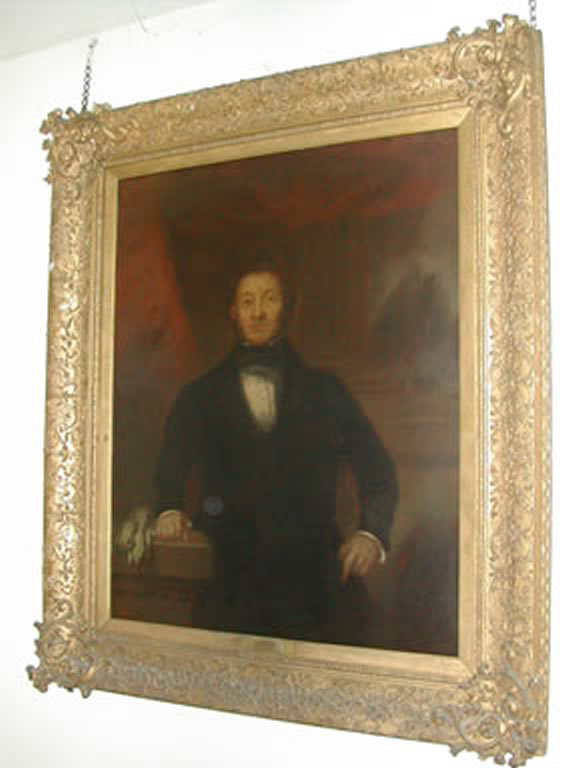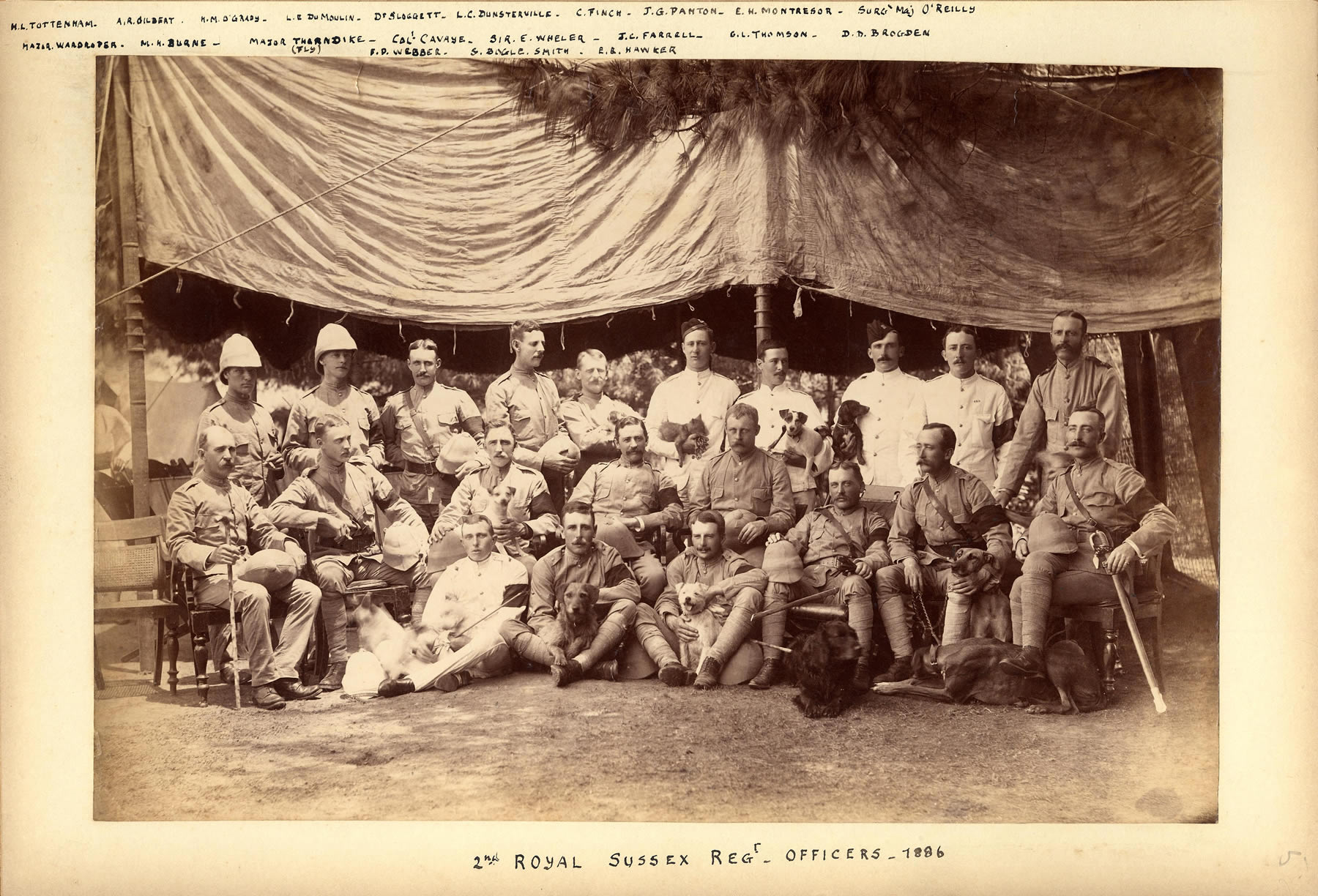The story of John Brogden (1798 – 1869) is of an energetic entrepreneur who progressed from being the son of a Lancashire farmer (who himself progressed from tenant farming to owner-occupancy)
via horse breeding, street cleaning contracts in Manchester and London (using a patent machine), constructing and promoting railways, mining and iron production in Staffordshire, Bristol and
South Wales, other civil engineering projects at home and abroad (including Holland, Australia, South America and New Zealand) and forming in 1846 a trading partnership with several of his sons
that was very successful for several years. All this was achieved without formal training as an engineer although he did receive grammar schooling in Clitheroe. He seems to have had the knack
of choosing his workers well and of being well trusted by his backers. Smiles (1872) writes of his energy, drive and daring. Even allowing for Smiles’ Victorian hyperbole, John Brogden’s funding
and construction of the Ulverston to Lancaster railway with its difficult route around Morecambe Bay (a project which even the great George Stephenson contemplated but did not proceed with)
marks a high point in his career. It enabled his own iron ore to be transported more easily from Barrow and paved the way for Barrow’s prosperity. John Brogden’s is not quite a rags to riches
story but it is a remarkable one, never-the-less.
John’s death in 1869 preceded the company’s decline in fortunes but the high levels of borrowing to finance expansion began to be problematic when the expected profits from the New Zealand
enterprises, the depression in the iron and coal industries and expensive litigation, some within the family itself, took their toll. In fact, cash flow may already have become a problem
before John’s death as his will provided for delays in the payments of his daughters’ inheritances for five years. In the event, the younger daughter had to sue the brothers to gain her dues.
John’s second son, Alexander (JP; MP) had become company chairman. By 1878 the South Wales interests were in receivership; the company was dissolved in 1880 and two of the sons filed for
bankruptcy in 1884. Fourth son James rescued the Brogden’s reputation in South Wales after the bankruptcy by continuing to work with his wife Mary on the development of Porthcawl as a
port and town. The Brogdens are remembered fondly in the area, including in street names and the Brogden Hotel. There are also commemorative street names in the Manchester area, such
as Brogden Grove in Sale.
The fifth son, George, being too young to join the partnership when it was established, later made his own way as a successful civil engineer and colliery owner and was thus not drawn
into his brothers’ downfall.
John Brogden had seven grandchildren and four of these were males to carry the surname forward. It has not yet proved possible to find any male great-grandchildren. Grandson *Arthur
John seems to have had no children; James had a daughter, Edith; **Duncan Dunbar, who spent a few years in the army in India and died relatively young, was married but his wife died
in childbirth, as did the baby; George Alexander who became a family doctor in Southampton married Grace Elizabeth but it is not known if they had any children. For the moment, it
would appear that the branch of the Brogdens that produced John Brogden and his enterprising sons, had run out of male heirs by the end of the 1930s.
Of the female lines, little is currently known, other than through the descendants of Samuel Budgett who married John Brogden’s elder daughter, Sarah Hannah. His agreement to act as a
trustee to John Brogden’s will brought him financial disaster. His descendant, David A Budgett and David’s cousin, Robin E Brogden Budgett, have maintained a strong interest in the
John Brogden history.
Currently under preparation and awaiting archeological exploration (and thus only open at present to pre-arraged visitors) is PARC TONDU, where John Brogden's ironworks near Porthcawl
in South Wales can be seen. The lift, engine houses, coke ovens, kilns, blast stoves and furnaces, rolling mills and offices are available to view as part of a guided tour.
It is planned for the site to be fully open to visitors. Parc Tondu is a Scheduled Ancient Monument.
Phone 01656 727810 or email tonduironworks@groundworkbnpt.com to arrange a visit.
* The 1881 Census lists Arthur John as a landowner, living at 13 Hereford Square, London with his wife and three staff. Tom Metcalfe's memoire says that “After the “great loss of money,
Arthur took to the church.” Alumni Cantabrigienses notes that he was ordained Deacon in 1883 and Priest in 1884 at the church of St Barnabas, Cambridge. He died a year later, aged only 31.
The Furness Masons website (www.FurnessMasons.org) describes Arthur John as a founder member of the Grange-over-Sands Lodge which is named after him and where hangs a portrait donated
by a fellow mason in 1916. He had been a mason whilst at Cambridge. Arthur John nominated his uncle, Alexander, to be a member in 1877. Alexander resigned in 1879 and Arthur John in 1882.
It is not known if Arthur John had any children. Click here to see the photo.
Many thanks to John Martin for calling attention to the link with the Masons and for supplying the photograph and to the Lodge Committee for their permission to add the photo to this website.

Arthur John Brogden

A photo of Duncan Dunbar Brogden, taken in 1886 with a group of fellow officers of the 2nd Royal Sussex Regiment, possibly in India.
This photo is reproduced by kind permission of the County Archivist, West Sussex Record Office (Ref: RSR PH 2/10).
Updated 26/12/2010
Further articles on John Brogden and his family to be found in this website:
See also the Wikipedia article on John Brogden & Sons (compiled and contributed by his descendant, David Budgett)